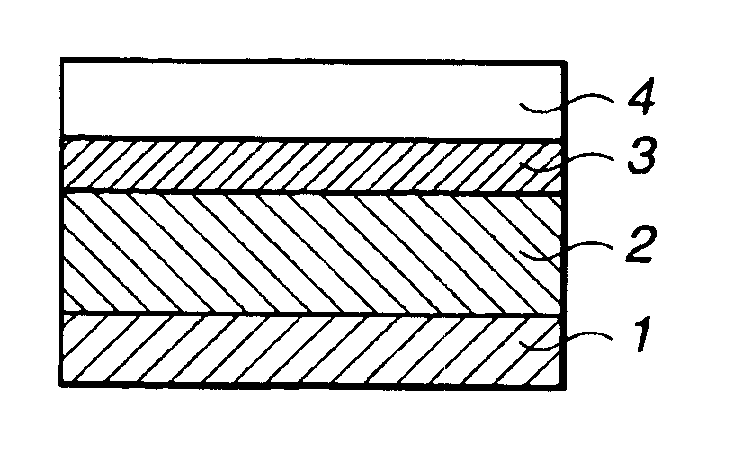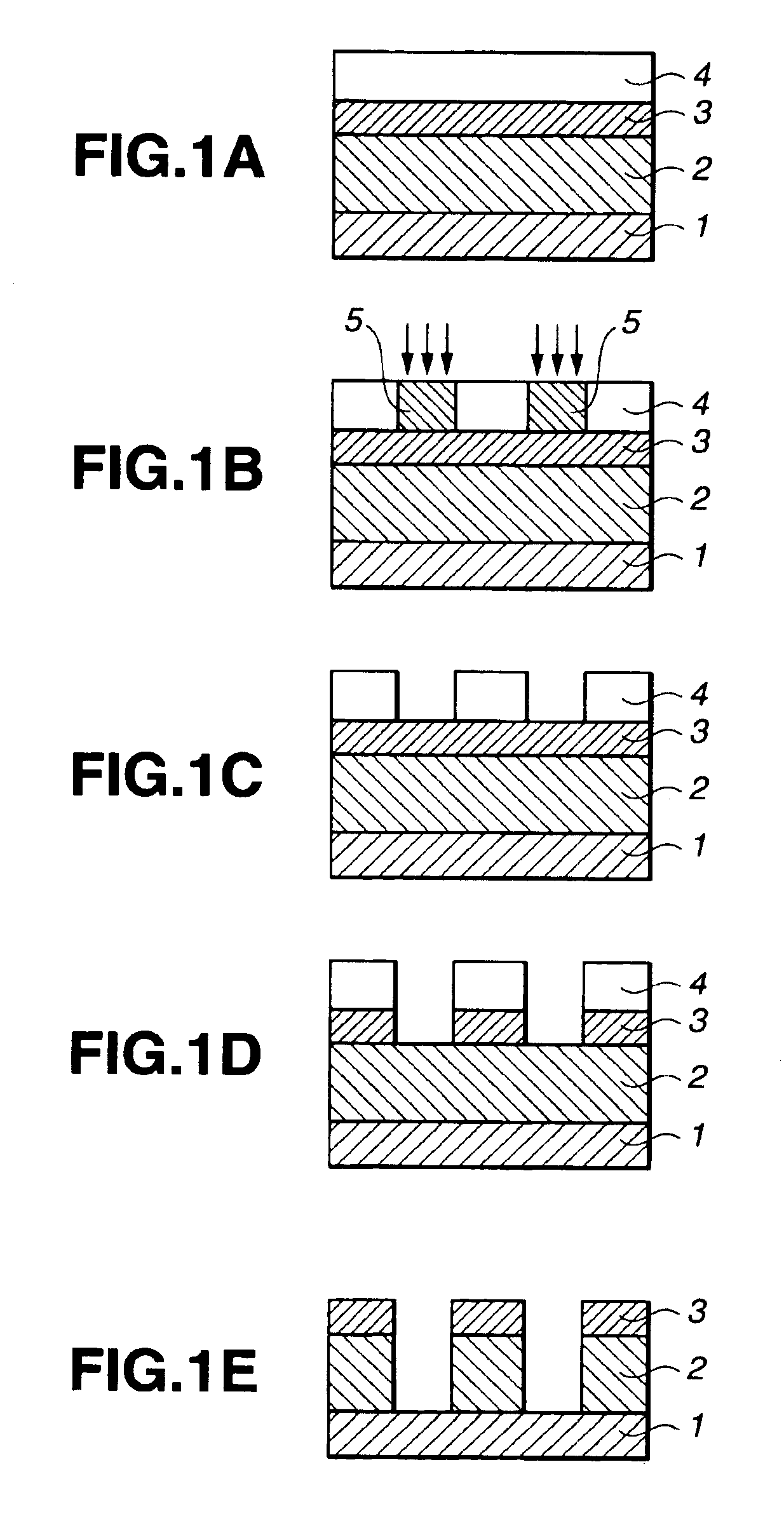Silicon-containing polymer, resist composition and patterning process
- Summary
- Abstract
- Description
- Claims
- Application Information
AI Technical Summary
Benefits of technology
Problems solved by technology
Method used
Image
Examples
synthesis example 1
[0137]In a 300-ml flask were admitted 9.8 g of maleic anhydride, 93 g of 1,3,5,7,9,11,13-heptacyclopentyl-15-vinylpentacyclo[9.5.1.13.9. 15.15. 17.13]octasiloxane (Monomer 1), and 100 g of THF as a solvent. The reactor was cooled to −70° C. in a nitrogen atmosphere, after which deaeration in vacuo and nitrogen blow were repeated three times. After warming to room temperature, 4.0 g of 2,2′-azobis(2,4-dimethylvaleronitrile) as a polymerization initiator was added. The reactor was heated to 55° C., at which reaction was conducted for 25 hours. The reaction solution was diluted with 5 ml of acetone and poured into 4.5 liters of isopropyl alcohol for precipitation. The white solid precipitate was collected by filtration and dried in vacuo at 40° C., yielding 56 g of a white polymer.
[0138]The polymer was analyzed by 13C— and 1H-NMR and GPC, with the results shown below.
[0139]Copolymer compositional ratio[0140]maleic anhydride:Monomer 1=48:52[0141]Mw=8,600[0142]Molecular weight dispersity...
synthesis example 2
[0144]In a 300-ml flask were admitted 9.8 g of maleic anhydride, 105 g of 1-(dimethylvinylsilyloxy)-3,5,7,9,11,13,15-heptacyclopentylpentacyclo-[9.5.1.13.9.15.15.17.13]octasiloxane (Monomer 2), and 100 g of THF as a solvent. The reactor was cooled to −70° C. in a nitrogen atmosphere, after which deaeration in vacuo and nitrogen blow were repeated three times. After warming to room temperature, 4.0 g of 2,2′-azobis(2,4-dimethylvalero-nitrile) as a polymerization initiator was added. The reactor was heated to 55° C., at which reaction was conducted for 25 hours. The reaction solution was diluted with 5 ml of acetone and poured into 4.5 liters of isopropyl alcohol for precipitation. The white solid precipitate was collected by filtration and dried in vacuo at 40° C., yielding 86 g of a white polymer.
[0145]The polymer was analyzed by 13C— and 1H-NMR and GPC, with the results shown below.
[0146]Copolymer compositional ratio[0147]maleic anhydride:Monomer 2=51:49[0148]Mw=18,200[0149]Molecul...
synthesis example 3
[0151]In a 300-ml flask were admitted 11.1 g of N-methylmaleimide, 105 g of 1-(dimethylvinylsilyloxy)-3,5,7,9,11,13,15-heptacyclopentylpentacyclo-[9.5.1.13.9. 15.15. 17.13]octasiloxane (Monomer 2), and 100 g of THF as a solvent. The reactor was cooled to −70° C. in a nitrogen atmosphere, after which deaeration in vacuo and nitrogen blow were repeated three times. After warming to room temperature, 4.0 g of 2,2′-azobis(2,4-dimethylvalero-nitrile) as a polymerization initiator was added. The reactor was heated to 55° C., at which reaction was conducted for 25 hours. The reaction solution was diluted with 5 ml of acetone and poured into 4.5 liters of isopropyl alcohol for precipitation. The white solid precipitate was collected by filtration and dried in vacuo at 40° C., yielding 89 g of a white polymer.
[0152]The polymer was analyzed by 13C— and 1H-NMR and GPC, with the results shown below.
[0153]Copolymer compositional ratio[0154]methylmaleimide:Monomer 2=48:52[0155]Mw=17,500[0156]Mole...
PUM
| Property | Measurement | Unit |
|---|---|---|
| Nanoscale particle size | aaaaa | aaaaa |
| Composition | aaaaa | aaaaa |
| Solubility (mass) | aaaaa | aaaaa |
Abstract
Description
Claims
Application Information
 Login to View More
Login to View More - R&D
- Intellectual Property
- Life Sciences
- Materials
- Tech Scout
- Unparalleled Data Quality
- Higher Quality Content
- 60% Fewer Hallucinations
Browse by: Latest US Patents, China's latest patents, Technical Efficacy Thesaurus, Application Domain, Technology Topic, Popular Technical Reports.
© 2025 PatSnap. All rights reserved.Legal|Privacy policy|Modern Slavery Act Transparency Statement|Sitemap|About US| Contact US: help@patsnap.com



